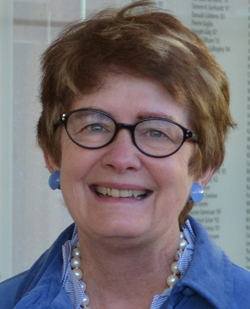 |  |
Steve Hinrichs, M.D. | Marsha Morien |
About Chikungunya
According to the Centers for Disease Control website, Chikungunya was first identified in the 1950s in Africa, but the first case of the disease in the Americas was found in the Caribbean in 2013.
The disease is transmitted to people by female Aedes mosquitos, and the most common symptoms are fever and severe joint pain. While the disease only rarely results in death, the symptoms are often severe and can become disabling.
Nebraska was one of a handful of states who identified cases of Chikungunya in 2014 with the first case being confirmed in June. Ultimately, four cases of the virus were identified in the state.
Less than a year after Nebraska reported its first case of Chikungunya, a team of researchers and scientists from UNO and UNMC was one of the less than 15 international groups recognized for its efforts as part of a worldwide contest to help predict the spread of the virus in order to improve medical response efforts. The contest was organized by the Defense Advanced Research Projects Agency (DARPA).
“There is no vaccine or medication to prevent Chikungunya virus infection or disease,” said team member Marsha Morien, instructor of health services research administration, College of Public Health. “Therefore, it is critical to predict outbreaks, so that public health officials can launch control measures. These would include reducing mosquito densities and encouraging the public to adopt prevention methods such as wearing long-sleeved shirts and pants to reduce the risk of contact with mosquitoes.”
In August, DARPA launched the competition to develop methods of tracking and predicting infection rates in North, Central and South America based on two hypothetical cases of the virus being identified in the Americas.
UNO and UNMC’s team competed against 465 other groups to be identified as having the best-proposed method of tracking the disease.
“This award recognizes the expertise of University of Nebraska researchers and scientists in bioinformatics, data analytics and predictive analysis of complex data,” said team lead Ann Fruhling, director of the School of Interdisciplinary Informatics at UNO’s College of Information Science and Technology. “I believe our multi-disciplinary team approach was a critical factor to our success, and we look forward to future opportunities to research and combat national bio-security threats and concerns.”
The team’s research implements a previously existing epidemiological model, called SEIR, which categorizes a population into different disease susceptibility levels. The team has modified the SEIR model to add categorizations of mosquito lifespan, the area’s average monthly temperature, and other related variables to determine the likelihood of disease transmission across the Americas.
One of the team’s researchers, Steven Hinrichs, M.D., professor and chair of the UNMC Department of Pathology and Microbiology, said the methodology could help prevent or limit the disease’s influence, particularly if the virus starts to appear this summer in the United States.
“That is why we’re developing these research strategies — to make sure we’re watching for it very closely and to determine what could cause it to spread more rapidly,” he said. “We actually believe that there could well be an outbreak of Chikungunya in some parts of the United States this summer, as the temperatures warm up and this particularly mosquito is able to move further north.”
